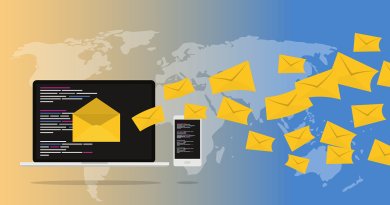4 Biggest Supply Chain Security Threats to Watch in 2023
The supply chain sector has always been a magnet for theft and fraud, but these risks multiply in the age
Read More
The supply chain sector has always been a magnet for theft and fraud, but these risks multiply in the age
Read More
A comprehensive cybersecurity strategy involves data recovery now more than ever. A solid plan could save organizations from the most
Read More
In the wake of sophisticated and expensive network security measures, protecting the lowly email server often gets missed. However, attackers count on this and have made even greater inroads into an already lucrative route for malware. Verizon’s 2022 Data Breach Investigations Report notes that email is still one of the two top delivery methods for malicious payloads, and the median organization receives three out of four malware payloads in this way.
Read More
Name: Dr. Silke Holtmanns Affiliation: PwC Finland – 5G Security Team Can you briefly introduce your current role in cybersecurity?
Read More
The world is a visual place. Communication with photos and short videos has now become commonplace thanks to applications like Instagram and TikTok. Photos are easily taken from accessible devices and used to share information such as events, news, and even emotions at a rate and speed unlike anything before. But what many may not realise is that photos can also be used to inconspicuously share data or carry out a cyber-attack.
The practice of concealing messages, images, or files within other messages, images, or files is called steganography. It comes from the Greek word steganos (covered) and the Latin word graphia (graphy). With the popularity of photos and images, this hacking method will likely increase and continue to see success.

If there’s one thing businesses should always focus on, it’s user experience (UX). If users aren’t having a good experience with your product, brand, or another aspect of your business, your company’s bottom line is suffering because of it. Increasingly, cybersecurity is becoming a big part of the user’s experience. Keep reading to find out more about how the two intersect, and how you can apply UX design to cybersecurity.
Read More
In the last few years, many large businesses have overhauled their approach to cyber security. The rise of remote working forced them to bring forward long-planned upgrades to both security technology and processes, resulting in far better data security across the board.
On paper it seems like very good news, but it isn’t necessarily for everyone. Why? Because the majority of cyber criminals are opportunists looking for the quickest and easiest way to make the maximum amount of money possible from victims. Consequently, they tend to target larger businesses that have more assets for exploitation. However, as these large businesses continue to shore up their cyber defences, cyber criminals have started looking elsewhere for easier targets, and many of them are turning their attention to lesser protected mid-market enterprises instead.

Name: Sonia Compans Affiliation: Technical Officer at ETSI Can you briefly introduce your current role in cybersecurity? I’m the point
Read More
By 2025, Gartner estimates that over 95% of new digital workloads will be deployed on cloud-native platforms, up from 30% in 2021. At the same time, Kubernetes is becoming the de facto standard for cross-cloud orchestration and a pillar of cloud native architectures.
A contributing technology that will play a big role in this transition is the extended version of the Berkeley Packet Filter (eBPF). eBPF enables programs to run in kernel of the host operating system (Linux, first, and now also Windows), and to instrument the kernel without changing kernel source code. eBPF programs are portable between kernel versions and atomically updateable, which avoids workload disruption and node reboot. eBPF programs can be verified at load time to prevent kernel crashing or other instabilities.

Name: Tom Madsen Affiliation: Cybersecurity SME with NNIT Denmark Editorial Board of Cybersecurity Magazine Can you briefly introduce your current
Read More